4 Different Types of HDMI Cable You Should Know
HDMI cables are the primary way to connect smart devices to a TV or home theater setup. Computer monitors, laptops, HD TVs, and game consoles all use HDMI. HDMI cables can pass video, audio, and limited control signals like HDMI-CEC.
HDMI Cable Types
When deciding on an HDMI cable, it’s important to understand the classifications available. HDMI cables are classified based on their HDMI version and signal transfer speed (bandwidth). So, read on to learn the types of HDMI cables.
- Standard HDMI Cable
Standard is the most basic HDMI cable, designed for earlier consumer applications, such as satellite TVs, DVD players, and screen projectors. It is tested to reliably transmit 1080i or 720p video with a bandwidth capacity of up to 5 Gbps. Standard HDMI cables do not transmit 4K and later resolutions, and HDMI versions 1.0 to 1.2a are native to this cable.
- Standard Automotive HDMI Cable
This cable is similar to a regular HDMI cable, but it is used to connect portable or in-car DVD players and other devices to in-car video displays. To avoid any kind of mess arising out of the electrical system of a nearby car, it has special shields.
- High-Speed HDMI Cable
A High-Speed HDMI cable is designed to handle video resolutions of 1080p and 4K (30 Hz) as well as provide support for 3D and Deep Color. Bandwidth transfer speeds up to 10 Gbps are supported. It is optimized for HDMI versions 1.3 to 1.4a.
- High-Speed Automotive HDMI Cable
This type supports the same features as High-Speed HDMI cables but is optimized for the automotive environment. It can perform under unique stresses of the automotive environment like temperature extremes and vibrations.
- Premium High-Speed HDMI Cable
This cable type has been designed and certified for ultra-reliable performance for 4K/UltraHD at up to 18Gbps bandwidth including advanced features such as 4K60, HDR, and expanded color spaces including BT.2020. It is optimized for HDMI versions 2.0/a/b.
- Ultra High-Speed HDMI Cable
This latest HDMI Cable is the only cable that complies with stringent specifications designed to ensure support for all HDMI 2.1a features including uncompressed 8k@60 and 4K@120 up to 48Gbps of bandwidth. The cable can present a video in up to 10K resolution and achieve up to 240Hz on an HDR TV. Ultra High-Speed HDMI supports HDMI 2.1a, meaning it works with almost all HDMI devices as it’s also compatible with earlier standards.
- HDMI Cables with Ethernet Built-in
Standard, High-Speed, Premium High-Speed, and Ultra High-Speed HDMI cables can also support an additional HDMI Ethernet Channel (HEC). These cables are made to allow multiple HDMI-connected devices to share a single traditional Ethernet connection to a broadband router at speeds of up to 100 Mb/sec. The implementation of this capability on devices is uncommon, nevertheless.

HDMI Connector Types
For an HDMI cable to fit into a particular display device and source, it requires an end connector. Here are four HDMI end-connector, depending on the application.
- Regular Size (Type A)
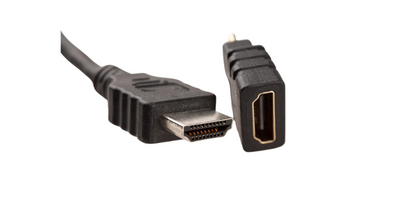
Type A connectors are typically used to connect source devices, such as DVD/Blu-ray/Ultra HD players, computers, media streamers, cable/satellite boxes, and video game consoles to TVs, video projectors, and home theater receivers. Type A uses a 19-pin configuration and is the largest HDMI connector.
- Mini Size (Type C)
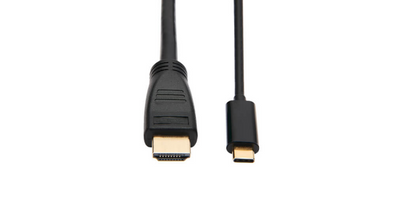
Mini HDMI connectors share the full functionality of standard HDMI connectors. They are used on DSLR cameras, standard-sized tablets, and even some laptops. The end that connects to the camera or tablet is a mini HDMI connector. The other end of the cable is a standard-sized connector that plugs into a TV, PC monitor, or video projector. Mini HDMI connectors also use a 19-pin configuration.
- Micro Size (Type D)
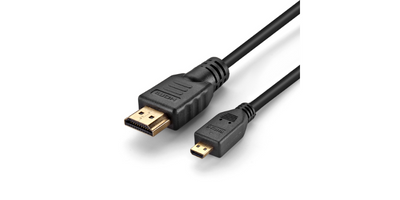
Though smaller than Mini HDMI, Micro HDMI retains the 19-pin configuration and provides the full functionality of its larger siblings. Micro HDMI is used on smaller portable devices such as digital cameras, smartphones, and smaller tablets. A micro HDMI cable has a micro connector on one end and a standard-size HDMI connector on the other.
- Automotive (Type E)
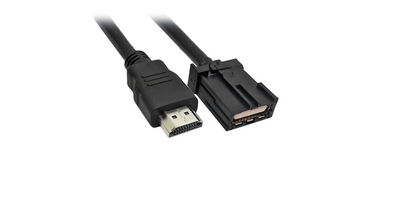
There is a special connector for Automotive HDMI cables. Automotive differs from other connector types in that it features a locking tab that allows it to remain in place when your vehicle vibrates.
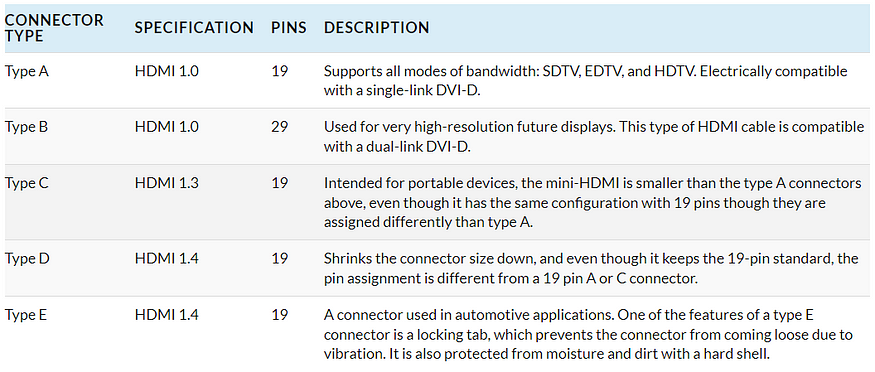
HDMI Cable Buying Tips
Some AV components include an HDMI cable in the box, but most don’t, so you should plan on buying one.
- Buy cables with the proper connector for your devices.
- Buy the proper cable length.
Avoid a cable that is too lengthy, and make sure it isn’t so short that it prevents you from moving the components far enough to allow for simple connection access.
- Pay no more than is necessary.
Don’t pay $100 or more for a 6-foot HDMI cable. HDMI cable quality isn’t usually reflected in the price. There are good quality HDMI cables priced as low as $10 for 6 feet. When making an online purchase, use a trustworthy website.
- Buy HDMI cables that support the capabilities of your devices.
For example, if you have or upgrade to a 4K TV/video projector, home theater receiver, and Ultra HD Blu-ray or streaming player, make sure the HDMI cables used between those devices are Premium-rated high-speed cables.
Original copy: https://www.avaccess.com/blogs/guides/4-different-types-of-hdmi-cable/
Related articles:

